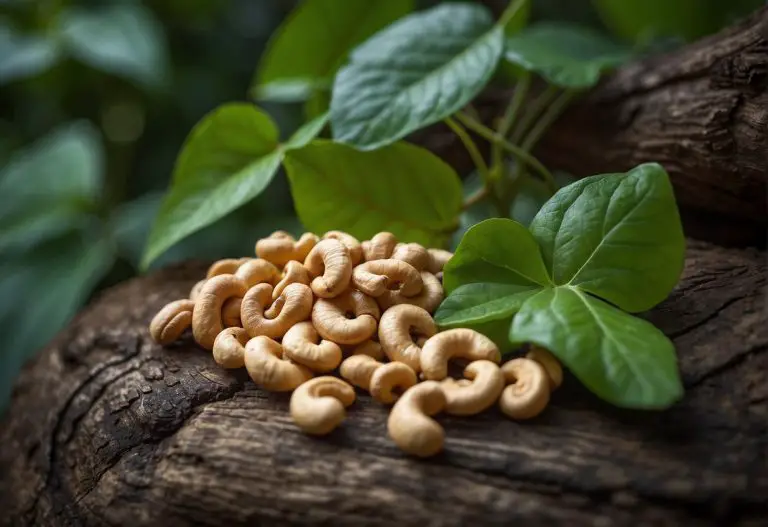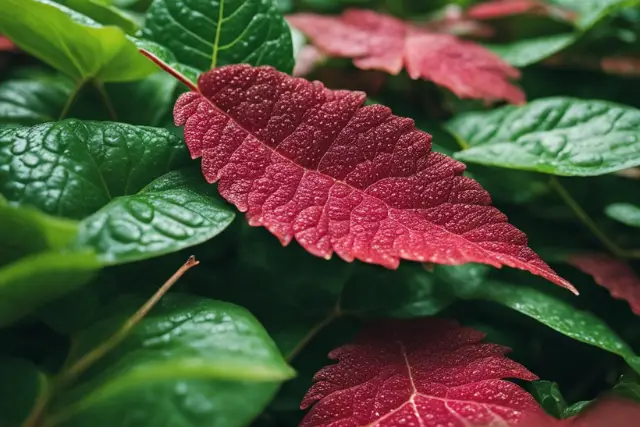Cashews and poison ivy share a surprising connection that may intrigue you. Both belong to the Anacardiaceae family, a group of flowering plants that contains species both beloved for their edibility and feared for their irritant properties.
While cashews are a favorite snack around the world, poison ivy is notorious for causing itchy, blistering rashes upon contact. Understanding this link highlights the importance of processing in making certain natural products safe for consumption.
The Anacardiaceae family’s defining characteristics can reveal why cashews are edible, yet require careful handling during processing to prevent exposure to toxic substances similar to those found in poison ivy. This connection also raises questions about the health implications, culinary and consumer considerations, as well as the environmental context and impact of cultivating these plants.
Key Takeaways
- Cashews and poison ivy are related through the Anacardiaceae family.
- Proper processing of cashews is essential to avoid toxins.
- The cultivation of Anacardiaceae species has distinct environmental and health considerations.
Understanding Anacardiaceae Family
The Anacardiaceae family, which includes poison ivy, cashew trees, and several other notable species, is characterized by their diverse habitats and the presence of toxic components in some members.
Characteristics of Poison Ivy
Poison ivy (Toxicodendron radicans) is easily recognized by its leaves, which are typically grouped in threes. You should note its habitat varies widely, from woody areas to exposed rocky outcrops, and even sandy dunes. The plant’s vine, capable of climbing trees, contains urushiol, an oil that can cause an allergic skin reaction.
Common Traits of Cashew Trees
Cashew trees (Anacardium occidentale) are mainly found in tropical climates. Your attention should focus on their unique fruit, which bears a single seed known as a cashew nut, encased in a hard shell with caustic substances. The cashew also has a fleshy accessory fruit, often referred to as a cashew apple.
Related Species: Mangos, Pistachios, and Sumac
Mangos (Mangifera indica) are important to note for their sweet, juicy fruits and large, evergreen leaves. Originating typically in South Asia, these trees require warm, humid climates.
In contrast, pistachios (Pistacia vera) thrive in arid regions and are recognized for their often pinnate leaves and edible seeds.
Lastly, poison sumac (Toxicodendron vernix) and staghorn sumac (Rhus typhina) are quite different despite sharing the name sumac. The former is notorious for its toxic properties, while the latter is admired for its ornamental qualities and lacks the toxic compounds found in poison sumac. Both, however, share a propensity for growing in swampy or open areas, presenting versatility within your understanding of the Anacardiaceae family habitats.
Health Implications

When you consume cashews or come into contact with poison ivy, you may be exposed to health risks such as allergic reactions and irritating skin rashes. Understanding the nature of these reactions and how they involve the immune system can be crucial for your well-being.
Cashew Allergies and Sensitivities
Cashews, like other tree nuts, contain allergens that can trigger allergic reactions in sensitive individuals. Symptoms may range from mild, such as oral irritation, to severe, including anaphylaxis—a potentially life-threatening reaction.
If you have a cashew allergy, carrying an EpiPen could be essential to counteract any accidental exposure.
- Mild symptoms: Oral irritation, itching
- Severe symptoms: Swelling of lips and throat, difficulty breathing, anaphylaxis
Poison Ivy Reactions
Exposure to poison ivy can lead to an itchy rash due to urushiol, an oily compound found in the plant. This rash, characterized by redness and swelling, is the result of your immune system’s response to urushiol. In case of severe reactions, medical attention should be sought.
- Common symptoms: Itchy rash, redness, swelling
- Severe cases: Extensive rash, intense itching, blisters, fever (seek medical help)
Cross-Reactivity Among Anacardiaceae
The Anacardiaceae family, which includes poison ivy, poison oak, and poison sumac, contains urushiol, which can cause cross-reactive hypersensitivities. This means that if you’re sensitive to one member of this family, you may experience similar reactions to others. Identification of poison ivy and related plants is vital for prevention.
- Cross-reactivity: Similar allergic reactions to related plants
- Prevention: Learn plant identification, avoid contact
Culinary and Consumer Considerations
When it comes to enjoying cashews and staying safe from the plant family Anacardiaceae, which contains poisonous species, it’s crucial to understand proper preparation and identification methods.
Safe Consumption of Cashews
Cashews, a popular tree nut, are not only tasty but also packed with nutritional value. However, raw cashews sold in stores are not truly raw, as they have undergone a roasting process.
This is key to your safety, as roasting at a high temperature eliminates the toxicity present in the shell oil. Consuming cashews that have not been adequately roasted can lead to unpleasant reactions.
| Tips for Preventing a Cashew Allergy |
|---|
| Introduce cashews into your diet gradually. |
| Choose packaged and clearly labeled products to avoid contamination. |
| Check for shelled varieties to minimize skin contact with residue. |
Always opt for cashews from a reputable source, ensuring safety and quality.
Identifying and Handling Poisonous Anacardiaceae
Not all members of the Anacardiaceae family are safe. The infamous poison ivy is a member of this family and can cause severe skin irritation upon contact.
When out in nature, identify poison ivy by remembering “leaves of three, let it be.” If you enjoy gardening or harvesting, always wear gloves and long-sleeves to minimize the risk of skin contact.
Be aware that cashew apples and the cashew nut grow together; the apple is non-toxic and edible, while the nut must be handled with care due to its toxic shell.
When purchasing cashews from a grocery store, they will always be labeled as roasted or salted, which is an indication that they’ve been processed to be safe to eat. Avoid bulk bins if you’re concerned about allergies and cross-contamination.
Environmental Context and Impact

Your understanding of the cashew’s place in the environment is incomplete without recognizing its family tree and the wider impacts of its cultivation.
Growth and Distribution of Anacardiaceae Members
The Anacardiaceae family includes a variety of trees and shrubs, notable for producing fruits and seeds that play significant roles in ecosystems and human cultures. Your awareness of cashews and poison ivy, two contrasting members, reveals the family’s diverse adaptability.
- Cashew Trees (Anacardium occidentale): Typically found in tropical climates, these evergreen trees bear distinctive kidney-shaped seeds known as cashews, attached to fleshy, colorful accessories or “cashew apples”.
- Mangoes (Mangifera indica): These fruit-bearing trees thrive in frost-free climates, producing juicy, fibrous drupes beloved worldwide.
- Poison Ivy (Toxicodendron radicans): This resilient woody vine or shrub is well-known for causing skin irritation and grows in various environments across North America.
Economic Importance and Agriculture
Your perspective on cashews is likely tied to their status as a valuable agricultural commodity. These seeds undergo a transformation from their raw, toxic state to the familiar roasted snack through a careful process that eliminates the toxic oils.
- Cashews: They require meticulous cultivation and processing, creating numerous jobs and supporting economies, primarily in Africa, India, and Vietnam.
- Mangoes: Representing both subsistence food and export product, mango trees contribute significantly to the agriculture sector in tropical regions.
Frequently Asked Questions

Cashew nuts and poison ivy share a compound that can cause allergic reactions. Understanding symptoms and treatment options is essential for those affected.
What are the symptoms of a cashew allergy rash?
If you have a cashew allergy, exposure to cashews may cause symptoms such as itching, redness, swelling, or the formation of blisters. The rash usually appears within a few hours to days after contact with the allergen.
How can touching cashews cause dermatitis and how is it treated?
Touching cashews can cause dermatitis if you’re allergic to urushiol, an oily resin contained in cashews’ shells. Treatment involves washing the affected area with soap and water, avoiding scratching, and using topical corticosteroids or antihistamines to reduce itching and inflammation.
How does the urushiol in cashews affect individuals with a poison ivy allergy?
Individuals with a poison ivy allergy may react to urushiol in cashew shells. Contact with this compound can lead to a similar allergic reaction as with poison ivy. This reaction might include rash, itching, and blisters.
So, it’s crucial to handle cashews carefully and consider wearing protective gloves if you have this allergy.


